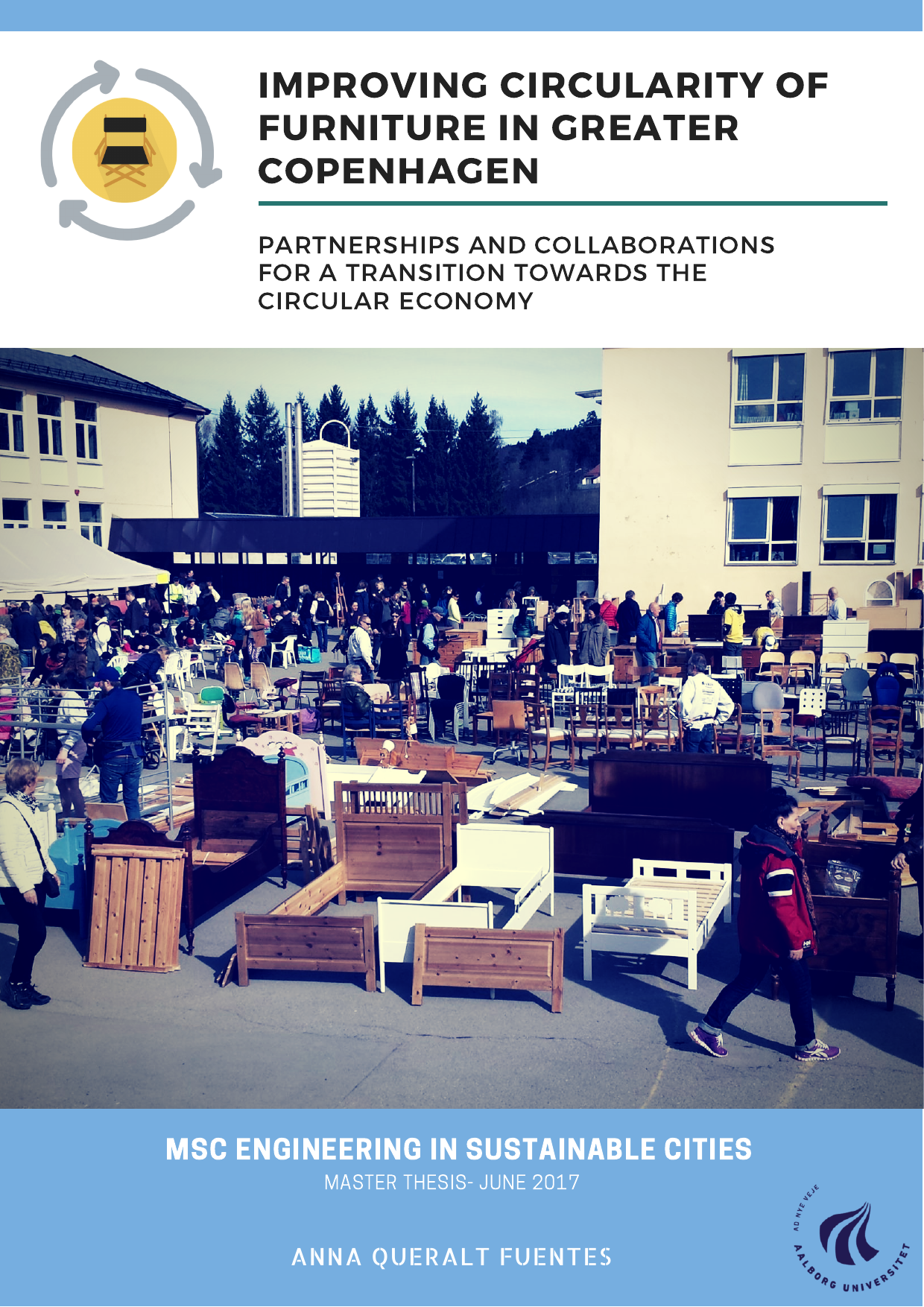
Improving Cirularity of Furniture in Greater Copenhagen: Partnerships and Collaborations for Moving Towards the Circular Economy
Author
Term
4. term
Education
Publication year
2017
Submitted on
2017-06-09
Pages
142
Abstract
The throw-away lifestyle is a problem directly related to air and waste pollution and resources scarcity. Even though furniture is supposed last long it has also been converted into an item that is easily found in trash containers and curbside. Copenhagen, is a city that supports the transition towards a Circular Economy model, and its neighbouring municipalities are home for new local initiatives that aim at going higher on the waste hierarchy while generating social benets. The main RQ posed is "How can the public and private sector improve circularity of furniture in Copenhagen?" This research thoroughly analyses the enablers and barriers that each of the initiatives faces , as well as their roles in their networks. It also includes the opportunities that innovation and collaborations between actors could work in order to prevent the downcycling of furniture. The initiatives analysed come from public businesses, NGOs, municipalities and corporations. In addition, a summary of how the connections between disposal methods, the initiatives for CE and the level of resource management. The conclusion points out the actions where public authorities and private sector can become stronger and bolder change makers. It also stresses the possibilities of new business opportunities and job positions that innovative solutions around the storskrald disposal method could bring if unlocked.
Keywords
Documents
